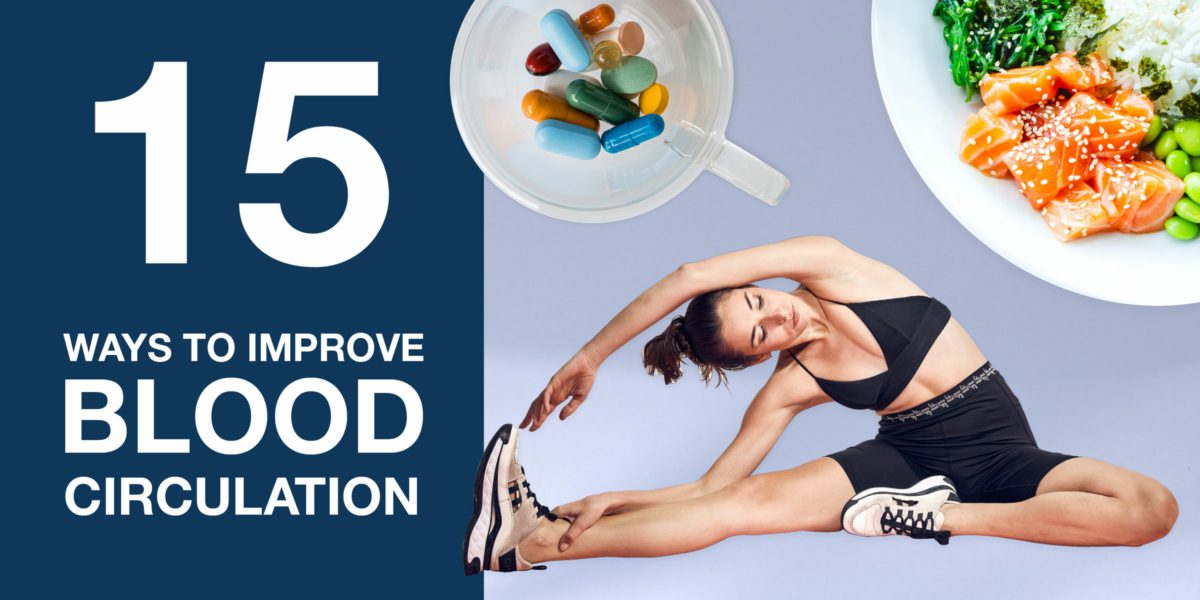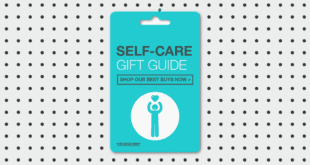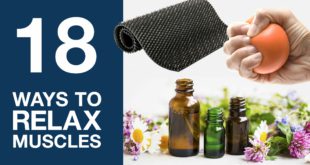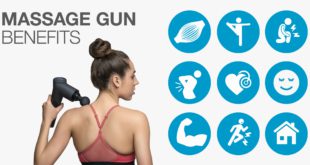Blood circulation plays a fundamental role in keeping you healthy, it’s a fact.
Your heart is pumping blood and delivering oxygen and nutrients to your cells, as well as removing any waste created by your organs.
With good circulation, much needed white blood cells in our immune system will be moved around the body to where they are needed the most.
Symptoms of poor blood circulation include a heavy feeling in the legs and feet, skin discoloration and ulcers.
Here are some of the most effective ways to improve your circulation:
1. Exercise Regularly
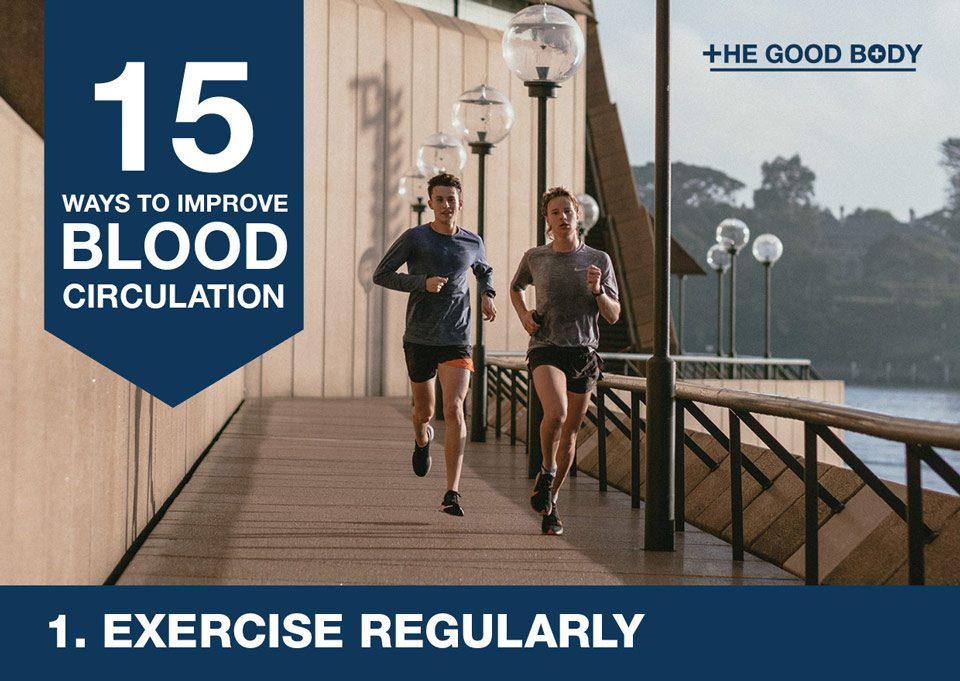
The U.S. Department of Health and Human Services recommends at least 150 minutes of moderate aerobic activity (brisk walking, biking, swimming) or 75 minutes of vigorous aerobic activity (running, aerobic dancing) every week.
That’s because it’s brilliant for both your mental and physical health.
Any cardiovascular exercise (known as cardio) that gets your heart rate going is excellent for increasing your circulation.
Cardio strengthens our ability to breathe in and use oxygen. It also improves the capacity of our blood vessels to dilate, which makes them work more efficiently, allowing our muscles to receive oxygen much more easily.
We’ve got one exercise you’re going to want to incorporate into your exercise routine — squats.
Just think of the position you take when you squat, you’re bringing your heart closer to your feet and getting the blood moving.
Squats are also great if you’re looking for ways to build muscle without using weights.
Still need more persuading to lace up your trainers?
Then take a look at this interesting health fact:
A lack of exercise now causes as many deaths as smoking.
We know it’s not always easy to find the energy to work out, so read our list of ways to increase your motivation levels and you’ll be exercising in no time.
2. Stretch!

Stretching is way more important than you might realize.
The Ohio State University Wexner Medical Center explains that it boosts blood flow, increases blood oxygen levels and helps to deliver nutrients to your muscles.
Leg stretches are particularly important:
A study from 2020, published in the Journal of Physiology, discovered that 12 weeks of easy–to–administer passive stretching (using an external force like a towel, gravity or another person to help you stretch) improves blood flow as it makes it easier for your arteries to widen, reducing stiffness.
Have you ever considered foam rolling?
It’s popular with athletes because it’s proven to provide health benefits such as increased range of motion, back pain relief and relaxation.
Findings published by the Journal of Strength and Conditioning Research showed that 30 minutes of foam rolling led to increased blood flow.
3. Drink Tea

On any given day, the Tea Association has shared, 159 million Americans will be enjoying a cup of tea.
You’re definitely going to want to stock up on green and black tea in particular!
A randomized study in 2021 requested that 66 patients with heart disease drink black tea or water.
They looked at the short-term effects by examining patients 2 hours after consumption and then the long-term effects by looking at patients over a 4 week period.
Black tea was proven to better blood vessel health and improve circulation in both the short and long term.
Green tea is jam-packed with nutrients and powerful for improving your blood circulation.
In fact, 203 research respondents in Japan discovered that drinking green tea can result in a lower rate of coronary artery disease.
There are lots of benefits from drinking tea, with certain blends acting as natural pain relievers.
You can improve your sleep with the right brew, and if you choose just the right ingredients you can even help to treat anxiety with a cup of herbal tea.
4. Practice Yoga
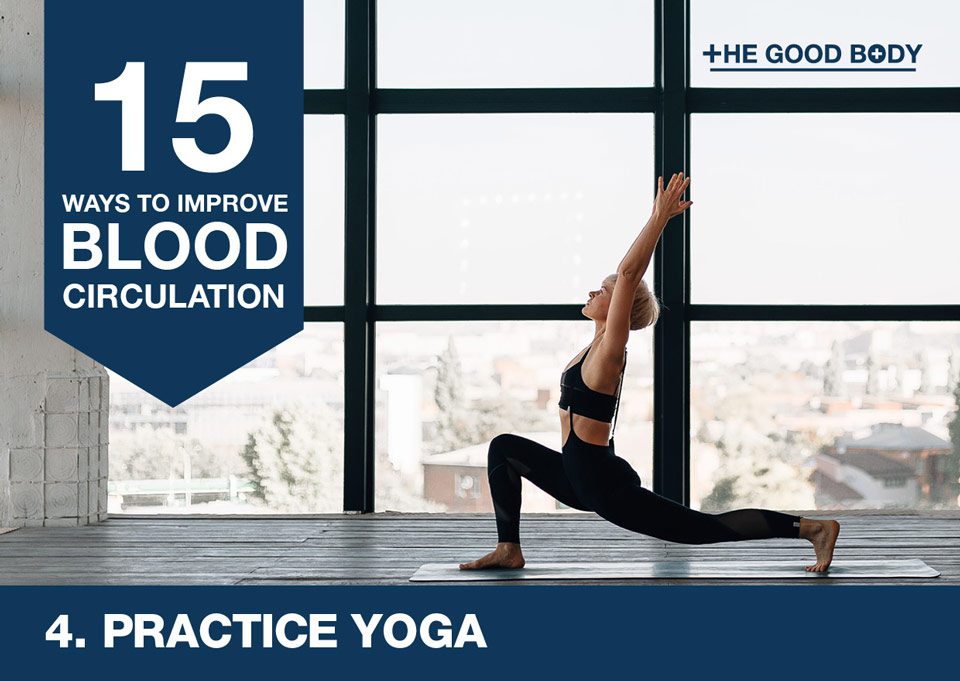
Yoga is growing in popularity every year, as more and more fall in love with the practice.
If you’re completely new to yoga then you definitely need to read up on the benefits, as there are a stack of them!
Research by the University of Washington shows that yoga can improve your life span.
Not only does it place you in a relaxed state, but the movement involved transports oxygen to your cells, with the twisting delivering fresh oxygenated blood to your organs — all of which lead to better circulation.
Plus, any poses that position your head below your heart and your hips, reverse blood flow to the brain and the heart.
Wondering where to start? Why not follow some inspiring yoga Instagram accounts and influencers to get you started on your yoga journey.
5. Eat a Balanced Diet
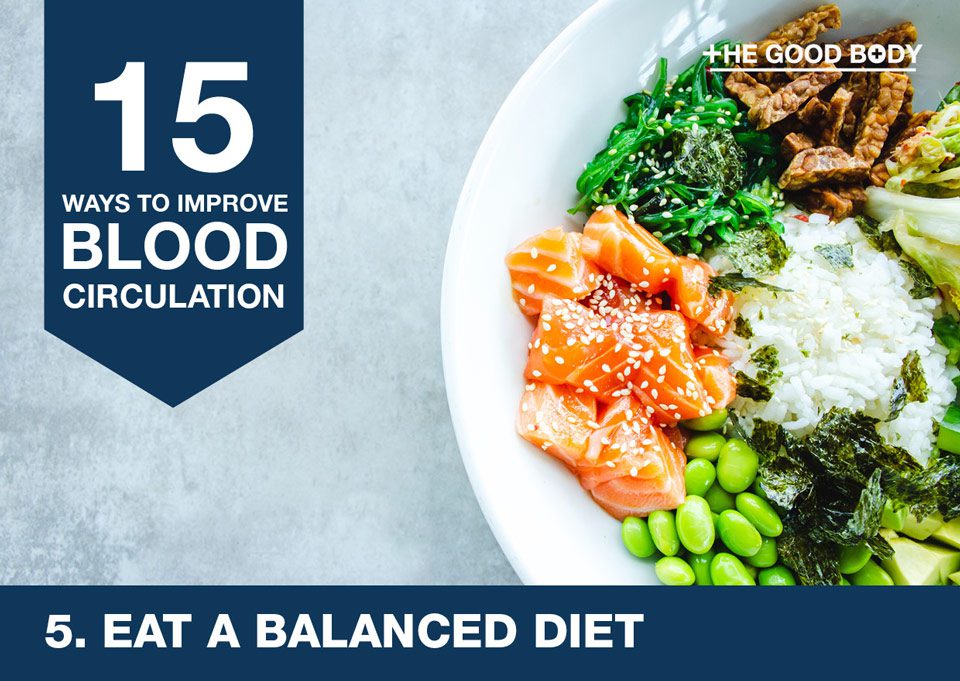
Ever heard the expression ‘you are what you eat’? If we want to be healthy then we have to eat healthy.
A balanced diet will reduce vascular disease, as well as keeping our weight, cholesterol and blood pressure in check.
The Circulation Foundation recommends that we eat plenty of fruit, vegetables and starchy foods, while cutting back on the amount of saturated fat, salt and sugar we consume.
There’s one type of food you definitely need in your diet — fish.
A review of the effect of omega-3 fatty acids in the cardiovascular system revealed that ‘a fish a day, keeps the cardiologist away!’
The Mayo Clinic says we should all aim for two servings of fish each week, especially fish rich in omega-3 (like salmon, sardines, mackerel and cod). It can help reduce high blood pressure and the chance of blood clots.
6. Stay Hydrated
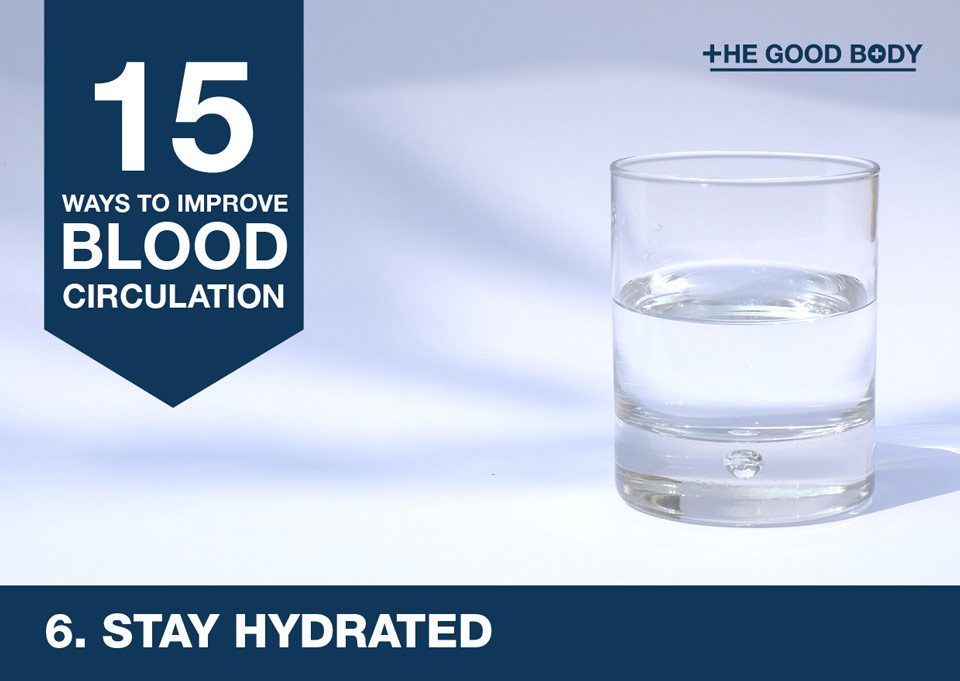
Did you know that water makes up 60% of our body weight and our blood is about half water?
And here’s another fact:
Our hearts pump approximately 2,000 gallons of blood a day.
Water is fundamental for our body to function at its best. Every cell, tissue and organ needs water.
Remember that the main ways we lose water is by breathing, perspiring, urinating and through our bowel movements, so we must continuously keep our body hydrated.
The U.S National Academies of Sciences, Engineering and Medicine suggests women should drink around 2.7 liters per day and men should aim for 3.7 liters.
This calculation is with food and drink combined. Just think, roughly 20% of daily fluid comes from food and the rest from drinks.
7. Get a Massage

Researchers at the University of Illinois in Chicago discovered that massage therapy not only eases muscle soreness after exercise but also impacts positively on blood flow.
The amazing thing about massage is that even if you haven’t exercised, the therapy can improve vascular function.
Excellent news as it shows massage benefits people regardless of how much physical activity they do.
Shiatsu massage in particular can stimulate your blood circulation.
You can enjoy it by booking a session with a massage therapist, or in the comfort of your own home by investing in a massage chair.
If you’re looking for something more portable then you may want to consider the powerful Theragun PRO or read our reviews of the best massage cushions on the market.
8. Breathe Deeply

For thousands of years, the act of controlling your breath to enhance your health has been practiced amongst Eastern cultures — such as yogic breathing.
Deep breathing has been shown to increase oxygen into our cells, slow our heart rate, reduce anxiety, lower our blood pressure and improve poor circulation.
But wait there’s more:
Slow deep breathing investigations, of which there have been many, have revealed positive effects on the respiratory, cardiovascular, cardiorespiratory and nervous systems.
9. Heat Therapy
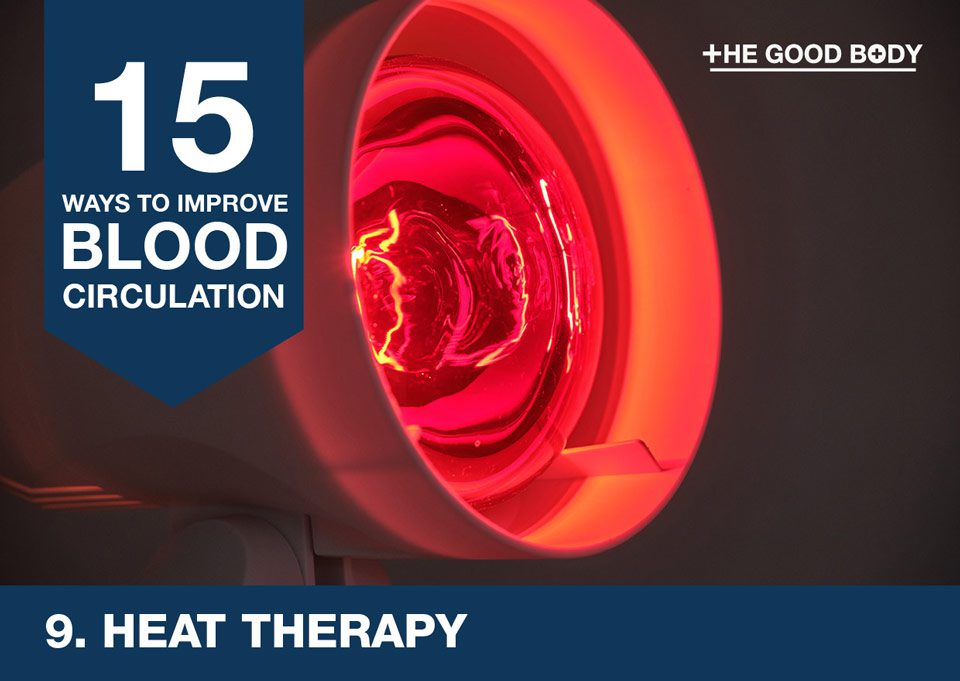
There’s nothing more relaxing than a long hot bath. It makes you feel calm but it actually may be doing more for you than you realize.
Heat therapy in the form of hot baths and saunas have been used for centuries.
A 2016 study unearthed findings that prove heat therapy is brilliant for circulation and vascular function as it boosts blood flow.
10. Manage Stress

Stress is a silent killer, causing more than 60% of all diseases including cardiovascular and therefore circulatory disease.
This is because when the body experiences stress, blood vessels constrict, meaning blood flow is slowed or blocked. Our immune system is very susceptible to stress.
If you’re feeling stressed out, it’s good to look for strategies to help manage it.
For example, you may want to consider the benefits of journaling, natural remedies like herbal tea or taking up yoga.
11. Stop Smoking
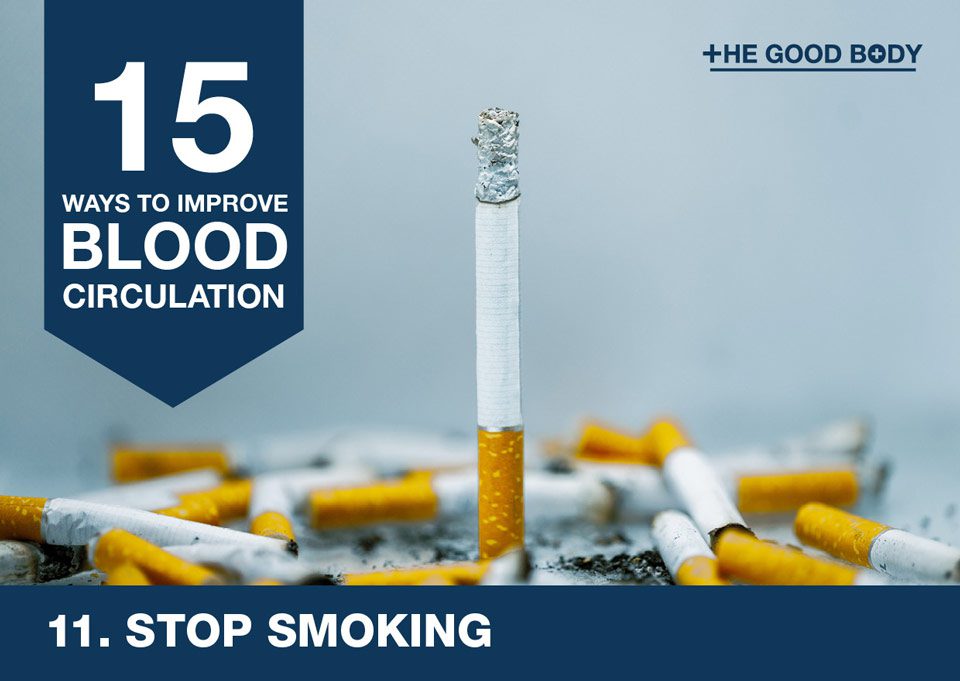
If you’re a smoker, you’re going to want to throw your pack in the trash after reading this.
Smoking is a leading cause of preventable death in the US but yet, the Centers for Disease Control and Prevention says diseases caused by smoking kill more than 480,000 people each year.
We all know the dangers of smoking but we can also tell you that it doesn’t gel with circulation.
As explained by John Hopkins Medicine, smoking negatively impacts blood pressure and the flow of blood from the heart.
It reduces the amount of oxygen going to our tissues, increasing the risk of blood clots and doubling the risk of a stroke (essentially reduced blood flow to the brain).
12. Take a Cold Shower

If you want to learn how to increase your circulation, you need to brave the chill!
Anything with a water temperature below 70°F is classed as a ‘cold shower’.
It may feel uncomfortable to shower in such conditions, but it can be revitalizing and makes the circulatory system more efficient.
Athletes swear by it, and no wonder when there’s data to show that cold water is excellent for healing after a sports injury.
What’s the science behind this?
By reducing the temperature in an area of the body, we’re accelerating warmer freshly oxygenated blood to that particular area and speeding up recovery.
13. Vitamins and Supplements
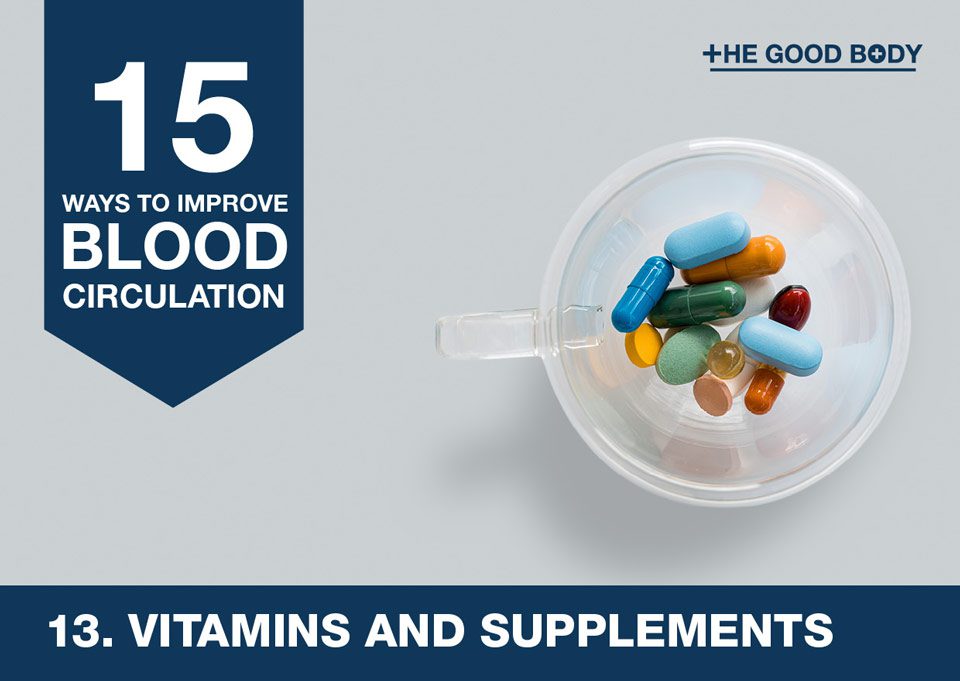
The Medical News Daily has shared that although there is no solid scientific evidence, there are many preliminary studies that suggest some vitamins and supplements may improve blood flow.
For example it’s believed that:
Vitamin B-3 can increase blood vessel function, cut down bad cholesterol and reduce inflammation within blood vessels.
Iron is essential for the circulatory system as it’s needed to make hemoglobin, fundamental for red blood cells, which is a must to help carry oxygen.
Omega-3 is also an extremely popular heart-healthy supplement due to many studies revealing it can reduce heart disease.
14. Compression Socks
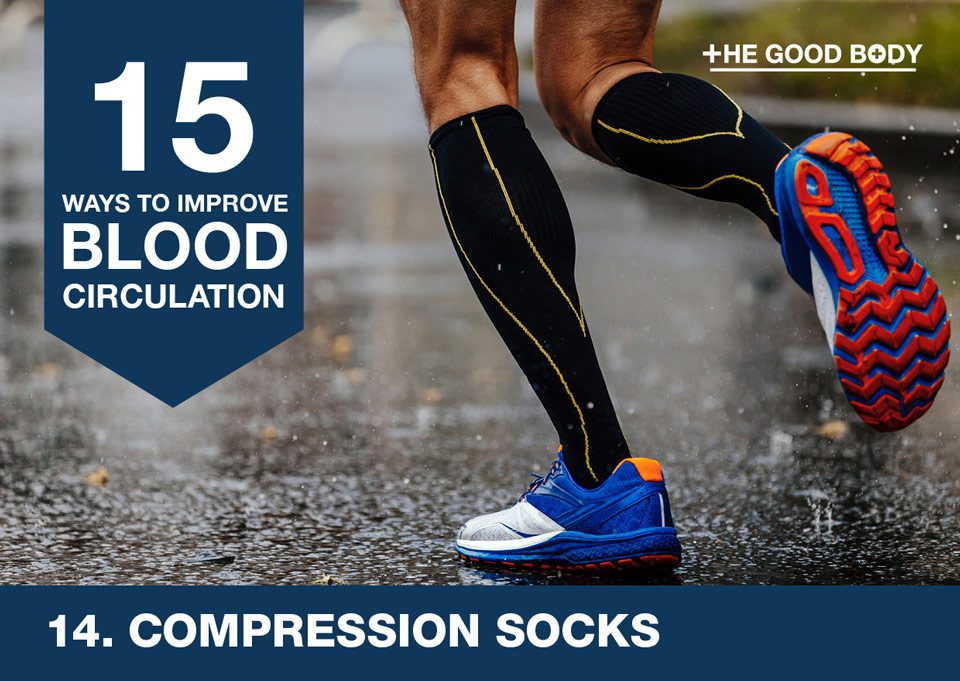
Many people wear compression socks, or stockings, because they’re an excellent way to get your blood flowing, as well as reducing pain and swelling in your legs.
Georgeanne Botek, a foot surgeon at Cleveland Clinic, has shared that there is a great deal of research that reveal their effectiveness.
She states that nearly 90% of leg disorders actually originate within the veins.
If you’re going to be catching a flight any time soon you’re definitely going to want to pay attention right now:
A study, involving results from 12 randomized trials, has proven that compression socks can prevent deep vein thrombosis (a type of blood clot) in people on flights of at least four hours.
Not all compression socks are the same so do your research into the best pair for you.
Vein specialist, Dr Eugene Ichinose from the Oklahoma Heart Institute, reminds us to consider the quality of the material, the size, the durability and the amount of compression being provided.
15. Use a Standing Desk

We suggest before you read on, you should stand up for this one!
Sitting down all day is dangerous for your health.
Bad news for those of us working at a desk as the more we sit, the more we risk developing serious health conditions.
Occupational therapist Michael Milicia at Cleveland Clinic says that your lower body hardly moves when you’re seated, decreasing your circulation. Plus, reduced movement results in more aches and pains.
A systematic review has proven that having a sedentary lifestyle increases our chances of obesity, diabetes and heart disease.
According to a meta analysis of 53 studies, published in the Applied Ergonomics journal, a standing desk is a great solution because it encourages people to spend less time sitting.
So we know that movement is key when it comes to circulation.
If you’re looking for inspiration, check out our shortlist of the best fitness Instagram accounts and influencers to help you get motivated!
